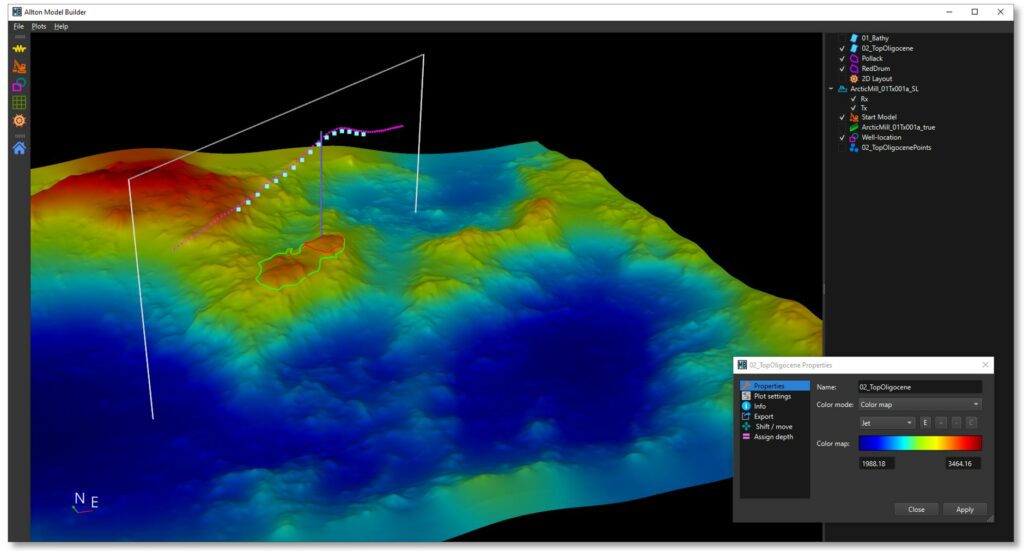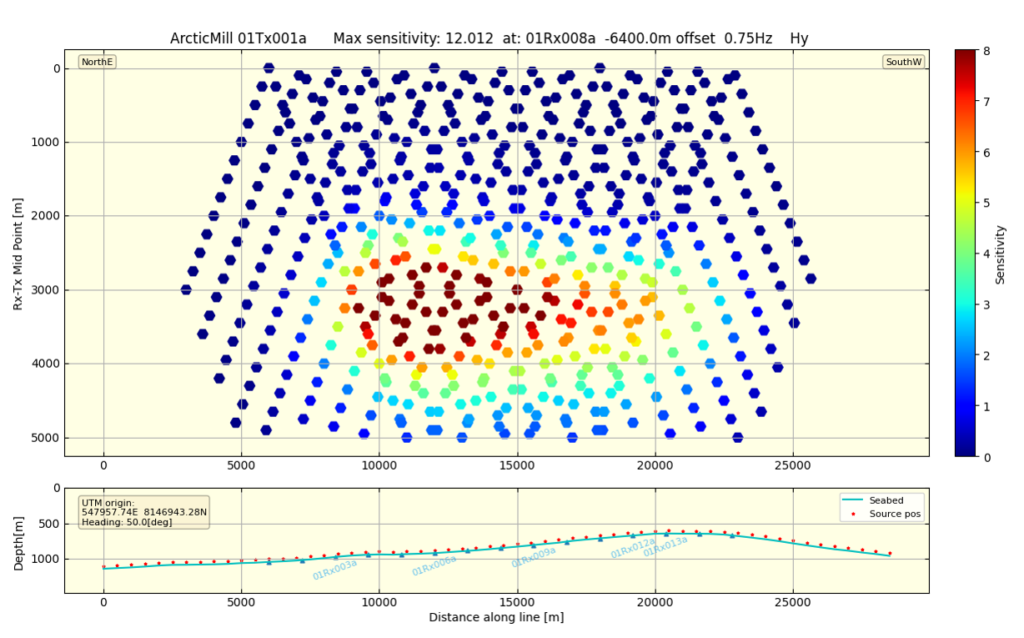Allton CSEM
Software Suite
Allton has developed a full processing and imaging Software Suite that represents state-of-the art data processing, modelling, and inversion. The inversion software is designed for 2.5D and 3D survey configurations (2.5D and 3D Gauss-Newton inversion algorithms) and will be 4D compliant. The first production versions of the modeling and inversion software are applicable to VTI models with extension to TTI planned for development in follow up versions. The Software Suite includes complete CSEM project functionality from initial feasibility studies and modelling with optimum acquisition design to data QC, processing and inversion.
The software is designed and developed complementary to unique computer hardware to secure optimal data quality, inversion efficiency and accuracy for the enhanced resolution required for 4D applications. The Suite is compatible with different CSEM data formats to address both legacy data and any newly acquired data.
Allton is currently using its proprietary Software Suite for all internal and client related CSEM work with unparalleled results.
MODEL BUILDER
Allton has developed an intuitive and efficient model builder that allows the user to build geological models for CSEM inversion and sensitivity modelling in minutes. The model builder in combination with modelling software has been designed to achieve higher accuracy output results compared to vintage software.

Figure 1: Allton model builder
MODELLING SOFTWARE
Accurate modelling of the electromagnetic fields is a key factor for obtaining good inversion results. High accuracy modelling cannot be achieved, at a reasonable numerical cost, with a low order method like finite volume or second-order finite differences. We use the high-order method described in Mittet (2010). Temporal dispersion effects are removed by the approach described in Mittet (2017, 2019). The presence of numerical noise in the form of staircase diffractions is often used as an argument against using finite-differences. However, these artifacts can be removed by the application of a proper grid preparation method (Mittet 2017; Mittet 2021) and do not represent an accuracy issue in Allton’s inversion scheme.
These new improvements for the simulation of electromagnetic fields give a numerical scheme with an accuracy that is well balanced with the overall survey accuracy.

Figure 2: Sensitivity modelling plot
DATA PROCESSING
Allton has developed a new pre-processing software for frequency domain data, transforming timeseries data to frequency-domain data. The new pre-processing algorithms are based on some of the workflows currently used in industry processing of CSEM data, but our new pre-processing software also deliver improvements over existing software packages.
The Allton pre-processing module uses multiple short FFT widows for each time trace allocated to a given source-receiver combination. The windows are stacked to improve the signal-to-noise ratio with reduction of the ambient noise level as a natural by-product of this procedure. A proprietary and robust de-spiking framework is utilized to detect and omit potential data outliers.
For the estimation of the overall data uncertainty, the combined influence of ambient noise and relative uncertainty follows the error propagation model given by Mittet and Morten (2012). Consideration for the effect of frequency and offset dependence on relative uncertainty is included in the workflow. Overall data uncertainty is a key element in defining the error functional for our inversion scheme.
CSEM QC
For data plotting and quality control, Allton has developed CSEM QC to enhance the user experience of working with processed CSEM data. The tool is intuitive and simple to use with most data preparation and analysis accomplished within a one-page GUI solution. The user can prepare data for sensitivity and inversion, to be followed with powerful analysis tools of the results. This easy to work with solution makes it simple to deliver the best possible results. The software is available to run on both Windows and Linux operating systems.
For acquisition, our processing quality control workflow ensures high quality data sets, providing clear QC processes for early detection of any potential data issues during operations. Fully processed data sets are transferred by satellite to land within hours after each round of receiver recovery enabling a fast-track delivery for a feedback cycle between onshore geoscientists with both the on-board crew and client representatives.

Figure 3: The CSEM QC software ensures accurate and efficient quality control of the CSEM data.
2.5D and 3D GAUSS-NEWTON INVERSION SOFTWARE
The Allton inversion software is implemented with two interchangeable update strategies. One of these is a classical line-search method, while the other is a trust-region implementation. The parameter space is not defined in terms of a pixel/voxel-based representation but by node-based basis functions. This method reduces the overall size of the inversion problem without compromising resolution.

Figure 4: 3D Gauss-Newton inversion from ATLAB-1 and ATLAB-3 datasets over Mohns Ridge located east of Greenland and southwest of Svalbard.

Figure 5: 2.5D synthetic inversion result (left) compared to a true model with two targets (right). The anomalous transverse resistance (ATR) is 3000Ωm2 for the left target and 900Ωm2 for the right target. The synthetic data were contaminated with a realistic noise prior to inversion 5.